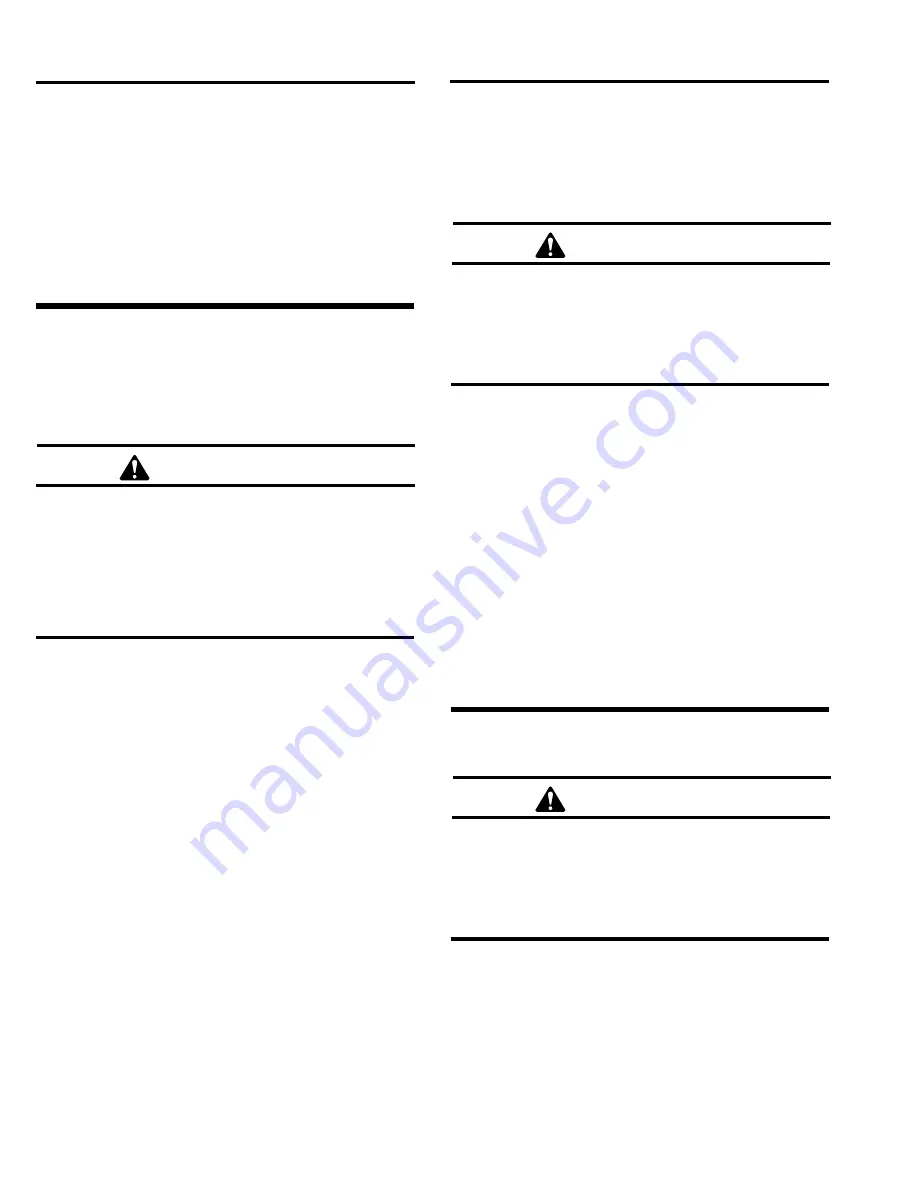
APOLLO 20 LP SUPPLIED-AIR RESPIRATOR
Page 5
•
Helmet with chin strap, suspension and cape
attached
•
Breathing tube assembly
•
Constant-Flow Connector with belt
NOTE: Respirator hose must be ordered separately.
2.1.2
When all of these components are present, pre-
pare the respirator for operation per Section 3.0. See
Figure 1 for a typical arrangement.
3.0
PREPARATION
3.1
Adjust Helmet Suspension per Section 6.1.
3.2
Lens Assembly
WARNING
Never use the respirator without the fixed inner
lens and middle lens in place. The fixed lens
provides support for the window gasket, and the
middle lens compresses the gasket. If the gasket
is not adequately supported and compressed,
leaks can occur which could permit entry of toxic
and hazardous dust or abrasive into the helmet.
3.2.1
The lens system is an important part of the respi-
rator assembly. The helmet is supplied with an inner lens,
secured by a thick rubber gasket. Held in place on top of
the inner lens by the lens frame, are the middle lens and up
to three perforated cover lenses.
3.2.2
Check that the inner lens is in place. (See Section
9.1)
3.2.3
The middle lens and perforated cover lenses are
secured to the helmet by the lens frame. The middle lens
will not need to be changed often because it is protected
by perforated cover lenses. As one cover lens becomes
frosted during blasting, it can be torn off to expose the next
lens. Check that the perforated cover lenses are in place.
(See Section 9.2)
3.3
Belt
3.3.1
Using the spring clip attached to the Constant-
Flow Connector, attach the connector to the belt slide.
3.4
Breathing Tube Assembly
3.4.1
Attach the red end of the breathing tube to the
threaded air inlet fitting at the back of the helmet.
3.4.2
Attach the swivel connector on the black end, to
the Constant-Flow Connector, or alternate air control
device.
WARNING
The red end of the breathing tube must attach to
the helmet, and the black end to the Constant-
Flow Connector. Failure to properly attach the
tube may increase noise levels beyond OSHA
limits.
3.4.3
Use the molded-in handle to carry or hang the
respirator. Never hold, carry or hang the respirator by the
breathing tube. Mishandling the respirator in this manner
may damage the tube or helmet inlet. Any leaks or breaks
in the breathing tube will alter the air flow through the
respirator and affect user’s safety and comfort.
3.5
Respirator Hose
3.5.1
Respirator hose must be NIOSH-approved Clemco
respirator hose. Use one or two 50 foot hose(s), or one to
three 100 ft. respirator hose to produce a maximum of 300
feet. Attach the female end of the respirator hose to the
Constant-Flow Connector. Attach the other end of the
respirator hose to an ambient air pump. Refer to table in
Section 4.2.2.
4.0
AIR SUPPLY
WARNING
Air supplied to this respirator system is critical to
the safety of the user. Read this section carefully.
Poor quality air will cause serious respiratory
injury or death to the user. See Toxic Dust Poi-
soning Warning in Section 1.3.
4.1
Air Quality
4.1.1
The quality of air supplied to the respirator is
extremely critical to the safety of the user. Special care
must also be taken to avoid accidental connection to any
other gas lines; such as, oxygen, acetylene, or nitrogen.






















